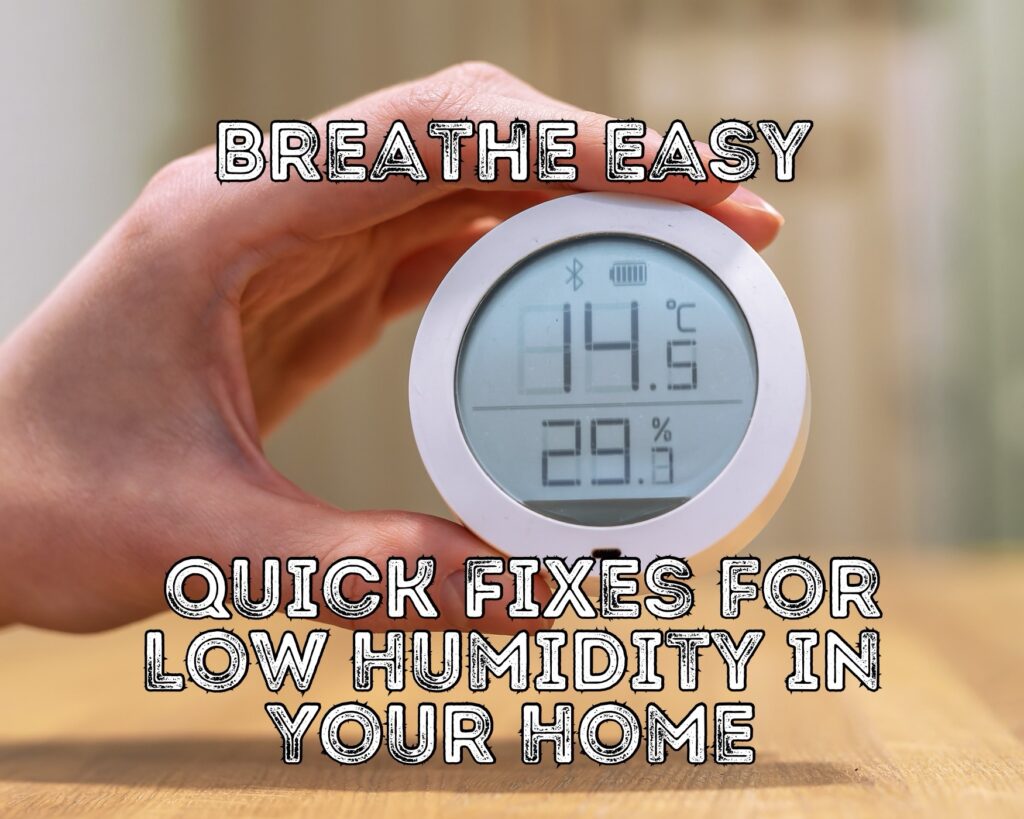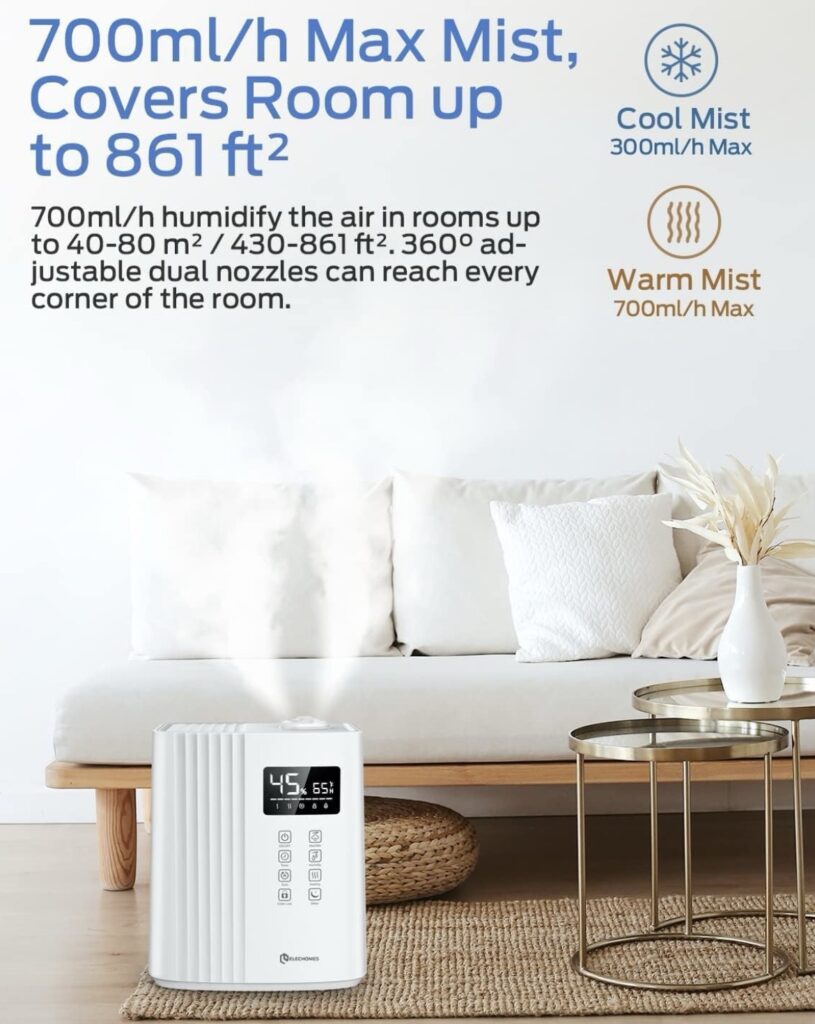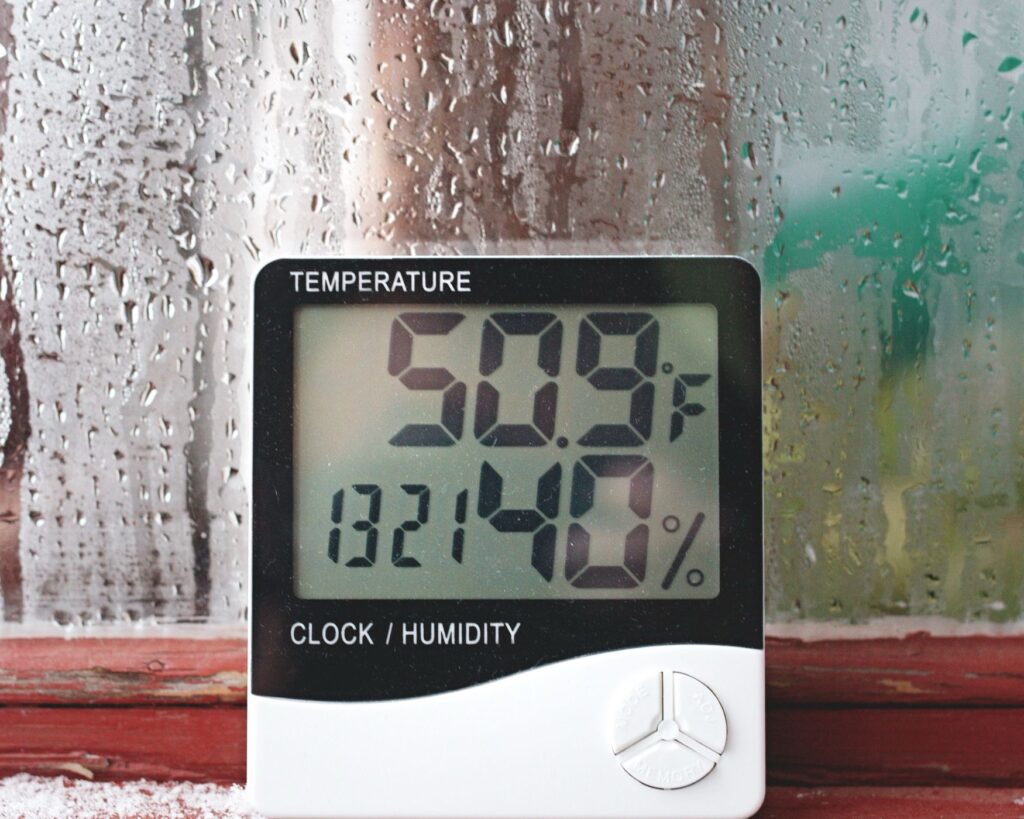Have you ever walked into a room and felt like something was just… off? Maybe your skin felt a bit too dry, or you got a surprise static shock after touching a doorknob. It’s not a haunted house scenario – it’s a case of low humidity in your home! In this friendly chat, we’re diving into the world of home humidity. It’s not just about comfort; it’s about your health and well-being too. So, grab a cup of your favorite beverage , and let’s unravel the mystery of home humidity together.

Understanding Home Humidity
When we talk about humidity in the context of your home, we’re referring to the amount of water vapor present in the air. It’s an invisible guest in your living space, but its presence or absence can make a world of difference.
What is Ideal Home Humidity?
The sweet spot for home humidity levels is generally considered to be between 30% and 50%. This range is the Goldilocks zone – not too moist, not too dry, but just right. It’s where comfort and health harmoniously meet.
Why Does It Matter?
You might wonder, “Why should I care about the humidity level?” Well, it’s more important than you might think. Proper humidity levels can prevent a host of issues, both for your home and your health. Ever noticed how your wooden furniture or floors seem to creak more in the winter? That’s low humidity at play. Or maybe you’ve felt your skin getting drier and your throat feeling scratchy? Again, low humidity is the likely culprit.
The Seasonal Shift
Humidity levels naturally fluctuate with the seasons. In the summer, the air can feel heavy and moist, but in the winter, it often turns dry and harsh. This seasonal shift is why many of us only notice humidity-related issues at certain times of the year.
Measuring Humidity
How do you know if your home has low humidity? The simplest way is to use a hygrometer, a handy tool that measures the moisture level in the air. They’re affordable, easy to use, and can be a great first step in taking control of your home’s climate.
A Personal Story
Let me share a quick story. Last winter, I started waking up with a sore throat every morning. At first, I thought I was just catching colds back-to-back. But then, a friend suggested I check my home’s humidity. Sure enough, it was way below the recommended level. It was a real “aha!” moment for me.
In this article, we’ve started scratching the surface of home humidity. It’s a topic that affects us all, yet it often goes unnoticed. Stay tuned as we delve deeper into the signs of low humidity and how it impacts your daily life. And remember, for more
in-depth insights and solutions, you can always explore 🌟 Health Survivalist 🌟 for a wealth of information and products tailored to creating a healthier home environment.

Signs of Low Humidity
Now, let’s dive into the tell-tale signs that your home might be suffering from low humidity. Recognizing these signs is the first step towards creating a more comfortable and healthy living space.
Static Electricity
One of the most common and surprising signs of low humidity is an increase in static electricity. Ever had those moments where you shock yourself or others after walking across a carpet? That’s a classic sign. It’s not just a minor annoyance; it can actually be harmful to electronic devices.
Dry Skin and Irritated Airways
If you’re constantly reaching for lotion or experiencing dry, itchy skin, low humidity could be to blame. It can also cause irritation in your nose and throat, leading to discomfort and potential health issues.
Damage to Wooden Furniture and Floors
Wood is sensitive to humidity changes. Too little moisture in the air can cause wood to shrink and crack. If your wooden furniture or floors are creaking more than usual, it’s time to check your home’s humidity levels.
Worsening Allergy and Asthma Symptoms
For those with allergies or asthma, low humidity can exacerbate symptoms. Dry air can carry allergens more easily and irritate respiratory systems.
Quick Humidity Boosters
So, what can you do if you find your home’s humidity level is lower than ideal? Here are some quick and effective ways to raise the humidity in your home.
Houseplants
Adding houseplants is a natural way to increase humidity. Plants release moisture into the air through a process called transpiration, subtly boosting the humidity level.
Bowls of Water
Placing bowls of water around your
home, especially near heat sources, can help add moisture to the air. As the water evaporates, it increases the humidity. This method is simple yet surprisingly effective.
Humidifiers
For a more direct approach, consider using a humidifier. These devices are designed to add moisture to the air, and they come in various types and sizes. For instance, the 🌟 Elechomes SH8830 Humidifier 🌟 is a fantastic option. It’s a top-fill humidifier with both warm and cool mist settings, perfect for any room in your home. With a large 6.5L capacity, it can run for hours, ensuring your home stays comfortably humidified. Plus, it comes with a remote control for easy operation and features like auto and sleep modes, making it a user-friendly choice for any household.
Cooking and Boiling Water
Don’t underestimate the power of cooking to increase humidity. Boiling water on the stove, especially during cooking, releases steam into the air, naturally raising the humidity level.
Drying Clothes Indoors
Hanging wet laundry to dry inside your home is another natural way to boost humidity. As the clothes dry, the water evaporates into the air, adding moisture. This method is particularly effective in smaller spaces.
Bathroom Door Trick
After taking a hot shower, leave the bathroom door open. This allows the steam to escape into other parts of your home, increasing the overall humidity. It’s a simple yet effective trick, especially during dry winter months.
These quick fixes can make a significant difference in improving the comfort and healthiness of your home environment. Remember, maintaining the right humidity level is not just about comfort; it’s about creating a healthier living space for you and your family.
Long-Term Solutions
While quick fixes are great for immediate relief, let’s talk about long-term solutions to manage home humidity effectively. These strategies will help you maintain a comfortable and healthy humidity level throughout the year.
Invest in a High-Quality Humidifier
A reliable humidifier is a must for consistently balancing your home’s humidity. The 🌟 Elechomes SH8830 Humidifier 🌟, with its large capacity and dual mist options, is an excellent choice for long-term use. It’s efficient, easy to use, and can cover a large area, making it ideal for any home.
Regular Maintenance of Heating and Cooling Systems
Your HVAC system plays a crucial role in regulating indoor humidity. Regular maintenance ensures it operates efficiently, helping maintain consistent humidity levels.
Use of Humidistats
Consider installing a humidistat, a device that measures and controls the humidity level in your home. It works alongside your HVAC system to automatically adjust the humidity to your preferred setting.
Weatherproofing Your Home
Sealing gaps around windows and doors can prevent dry outdoor air from entering and indoor moist air from escaping. This not only helps with humidity control but also improves energy efficiency.
Ventilation Improvements
Proper ventilation, especially in areas like the kitchen and bathroom, is essential. It helps to remove excess moisture and maintain a balanced humidity level.

Maintaining Ideal Humidity
Now that we’ve explored both quick fixes and long-term solutions, let’s focus on how to maintain that perfect humidity balance in your home. Consistency is key for lasting comfort and health.
Regular Monitoring
Keep an eye on your home’s humidity levels with a hygrometer. Regular monitoring helps you understand how daily activities and seasonal changes affect indoor humidity.
Adjusting to Seasons
Be proactive with seasonal changes. Use humidifiers more in the winter when the air is drier, and rely on natural ventilation during the summer to manage higher humidity levels.
Balancing Humidity Throughout Your Home
Ensure even distribution of humidity in your home. This might mean using multiple smaller humidifiers in different rooms or a larger system that covers the entire house.
Mindful Water Use
Be aware of activities that add moisture to the air, like long showers or boiling water, and adjust your humidity control methods accordingly.
Regular Maintenance of Humidifiers
Keep your humidifiers clean and well-maintained. Regular cleaning prevents mold growth and ensures efficient operation.
Managing home humidity might seem like a small aspect of home maintenance, but its impact on your comfort and health is significant. From simple DIY tricks to investing in a quality humidifier like the 🌟 Elechomes SH8830 🌟, there are numerous ways to achieve and maintain the ideal humidity level.
As an Amazon Associate we earn from qualifying purchases through some links in our articles.




